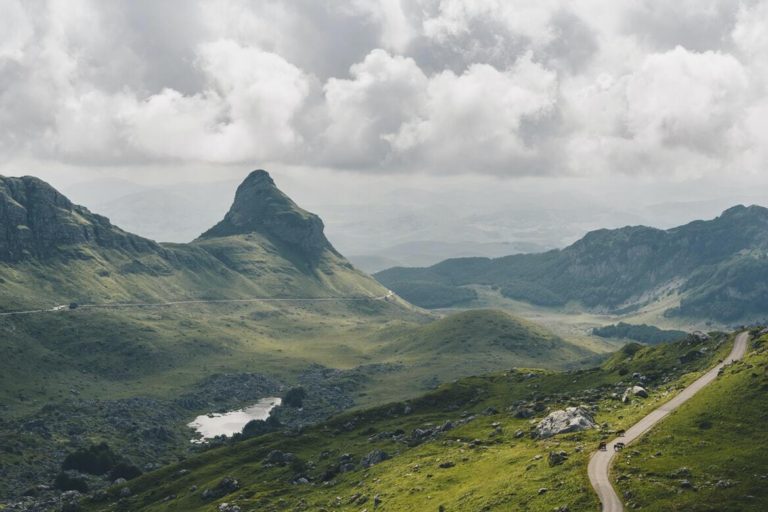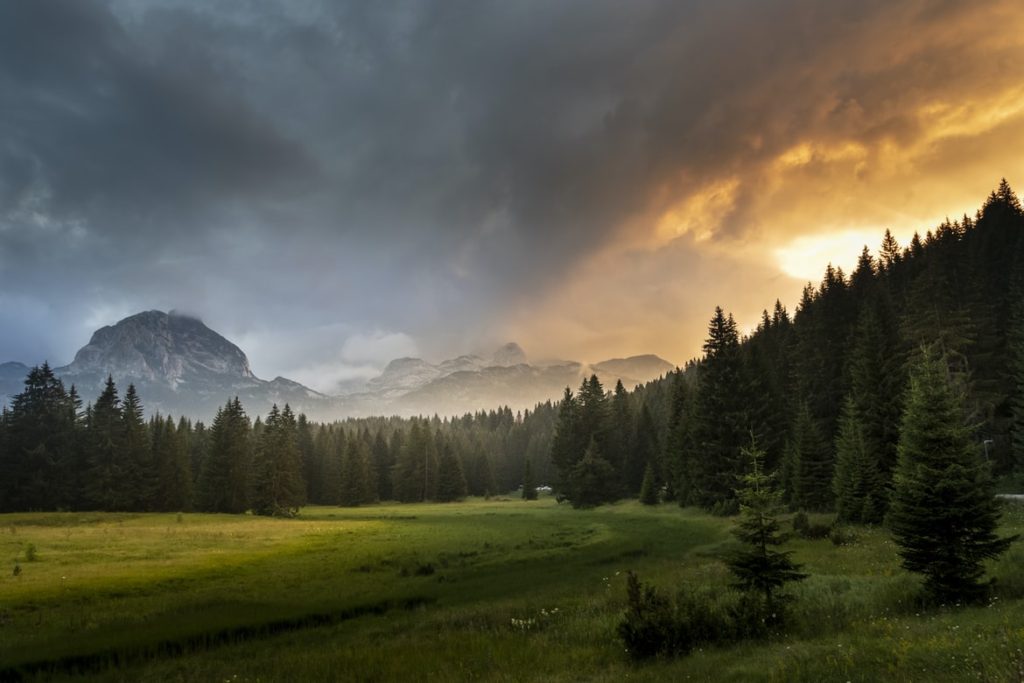Basic information
About the city
Zabljak is situated in the northwest of Montenegro, in the heart of Durmitor region, 1450 meters above sea level and it is the highest urban conglomerate in the Balkans. It is situated at the foot of Durmitor and surrounded by 23 mountain peaks over 2200 meters, with 18 lakes and Tara canyon, the deepest in Europe. In Zabljak and in nearby villages lives over 4500 people. The first Slav name of the place was “Varezina water”, probably because of the strong source of drinking water, around which the settlement was formed. Later, the name “Hanovi” or originally “Anovi”, where trade caravans rested. The present name Zabljak gets official in 1870, when at the same day began the construction of churches, schools and the captain’s home. In the days of war and the devastation old buildings were destroyed.The only left church was Sv. Preobraženja, built in honor of the victory over the Turks, in 1862. The emergence of Zabljak was followed by the opening of several retail stores and taverns. Thus, in the eighties of the 19th century, Zabljak became some kind of market, which caused a gradual role of regional administrative center. In the period before World War II, Zabljak was a small town with a typical mountain architecture. Already at that time, the unique nature starts to attract many tourists from the Kingdom of Yugoslavia, but also from abroad. Especially because of its ties with Montenegro, many guests were from Italy. Apart from the magnificent natural environment, the wealth of wildlife areas and facilities, which are great for fishing, leads a lot of lovers of this sport to Žabljak. During the Second World War, the town was burned. Burned the homes, institutions, and nothing of this small mountain village has remained, except for fracture and ashes. From then until today, Zabljak rebuilt itself and became a center of winter tourism in Montenegro.


The unique and varied nature of such a small region recommended Zabljak as the ecological capital of the first ecological state in the world. Deputies of the Parliament of Montenegro, loaded with fresh mountain air, the special session, held under the open sky, made the decision on proclamation of Montenegro the first ecological state and made Zabljak its capital. In the vicinity of Zabljak is situated a large number of villages and their age is very different. Some of the villages are there for centuries, while some are very recent. The settlers, who formed this region always chose better and more sheltered places, giving, in fact, the advantage of the sunny slopes and green meadows. A number of villages were formed in places where they originally were pastures or an old settlement. As far as architectural style, in this regard there are significant differences. Most of the differences are of “smashed” type, and the houses can be quite distant from each other. There are villages where houses are more or less close to each other, but generally speaking, villages and houses were built without a specific law and order. In the villages of Durmitor, is quite often that the village is divided into upper and lower, and it is so called. Lower Village, by a rule, is older village while the upper are formed in time probably from “katun” from population of the lower village.
Climate
Durmitor mostly has a mean annual temperature of 2 to 8 degrees Celsius. 120 days per year is under the snow, more than 15 inches, and ski resorts, which are at a higher altitude, are covered with snow for 150 days a year. Over the summer in the higher areas of Durmitor you can see burdens of snow, and in the area Kalic is “Thick snowdrift”, long 200 to 300 meters, where you can ski in the middle of summer.
The climate is mild in the canyons, through on the sub mountain at altitudes up to 1200 meters, the typical alpine. Winters are long and cold, summers short and cool, and it is interesting that the autumn is warmer than spring.
People
The population of these regions are part of, according to John Cvijic, the Dinaric race. He concludes:” These are people of strength and power, mostly very tall, slender, flexible, never fat, full facial expressions, strong cheekbones, eagle eye, most beautiful people on the Balkans”. Difficult times, difficult living conditions, forced people who lived here in the eternal struggle, the struggle with nature, trying to win as much as possible and make it their ally. The eternal struggle made only the strongest to survive, with the great migrations. Those who remained and remain confirm a poetic thought that from a rock can be born only what it is harder than it, and that the stone is a human cradle, and a mountain a noble. Such are the Durmitor people highlanders, harder than stone and stronger than the mountains, which has preserved them and always ready to defend their stone, something most valuable.
Ethnographically rich
Natural environment, economic conditions and lifestyle, are specifically reflected in the architecture, development tools for work and items for household use, as well as the way of dressing of people in this area. Residences and items for the household are traditionally made out from wood, and articles of clothing made of wool, hemp, linen and leather. Especialy very finely sculpted are often carved household objects made of wood. One of the objects of this type is “stolovaca” which is made of hardwood, usually maple, and features a beautiful form, imaginative designs and sophisticated carvings. The cradle also an object to whose shape, decoration and construction is given special attention, because it is a cult object, which is almost never alienates.
Housewives are particularly keen to have beautiful carved distaff, which often are exquisite artistic creations of local artisans. The garments are made of hand-made materials like wool. Woven fabrics, especially beautiful the ones with rolled blankets, blankets and other, velence, then the profession “džamadani”, “zubun”, skirts, “dušank”, parts of traditional female costumes, and other items of clothing made of wool. Of knitted products, for its beauty and interesting motives most interesting are sweaters, scarves, socks and “priglavci”. As shoes were used footwear made of sheepskin.
Ethnographic treasure represents a great richness and value of people in this area, but it gradually disappears under the influence of new industrial products, and modern life. Some of these crafts, however, have survived the time. So today in Zabljak you can buy a souvenir, but also as items of particular use.
Today
Today Žabljak is economically oriented towards tourism and the production of healthy food, which will certainly help to take the place it deserves. A new way of thinking, a private initiative, the entry of foreign capital and openness to the world, will make Zabljak a very developed tourist destination, the European format. The season lasts all year: winter holidays, spring and autumn (seminars, rafting, hunting …) and summer (vacation and recreation, sports). By visiting this site, you will feel the real peace, a blend of tradition and modernity, incredible natural surroundings, interesting, hospitable highlanders, a lot of unexpected (but nice and interesting) and you will let thoughts of everyday stress …
Declaration on the ecological state of Montenegro
We, the deputies of the Parliament of Montenegro, recognize that protecting the identity of our nations and areas in which we live and work, the nature of threats has become our timely, the most important job. Recognizing the debt to nature, which is powered by the power of our health, freedom and culture, we turn to its protection, on behalf of its survival and future offspring.
Not feeling any difference between us so strongly, as modified, which is our environment, we subordinate our national, religious, political and other beliefs and feelings to intention to turn Montenegro into an ecological state.




